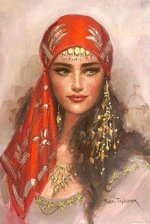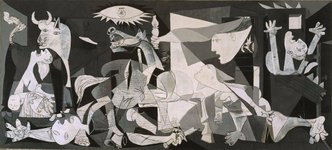Εγώ δεν έχω καμιάν απορία και δεν καταλαβαίνω γιατί έχετε εσείς. Ο Πικάσσο είχε μανία με τον ταύρο, γιατί συμβόλιζε γι
’ αυτόν πολλά και κατεξοχήν την αντρική σεξουαλικότητα μεταμορφωμένη σε κυριαρχική δύναμη. Ταύροι (και μινώταυροι) έρχονται και επανέρχονται στο έργο του. Πολύ σωστά ο ποιητής διέβλεψε την ταύτιση: δεν είναι πια «ο ταύρος του Πικάσσο», είναι «ο Πικάσσο του ταύρου».
the animal stands for the symbol of virility. In several of his drawings and paintings the animal takes the form of a Minotaur, and perhaps this anthropomorphic representation additionally justifies explanations that link bulls to masculinity and male strength. The Minotaur is also connected with the artist himself, and the representation of his personality.
Given Picasso always identified himself as the bull, one interpretation is him facing his impending death as a bull faces the matador.
“Picasso said to me once: ‘Those horses, they’re the women in my life,’” said Richardson. “Throughout his life there was a thing of women being sacrificed to feed his art. His record with wives and mistresses and girlfriends is pretty rugged and a lot of women had to suffer for the sake of his art.”
- Memory Holloway “Eroticism, myth and the bullfight: Picasso’s Femme Torero I and Corrida”. NGV Art Journal 22.
He had aestheticised simple carnal love, dressing it up in a typical Spanish costume.
… it is not just that Picasso kept returning to images of bulls, bullfighters, and bull-men, it is that the Minotaur, with all its monstrous hybridity, reveals something central about Picasso himself, about his entire oeuvre. It is a figure that speaks to almost everything he did, both in and out of the studio.
Friedrich Nietzsche exclaimed of the ancient Greeks: “How much did these people have to suffer to become so beautiful!” In all history no culture has so passionately adored another culture as the West has idolized ancient Greece , not because Greek culture is filled with "mere truths" but because the Greeks, like Picasso, confronted by the chaos of history and the unconscious, moved toward a deepened awareness of life and a cultivation of that awareness.




